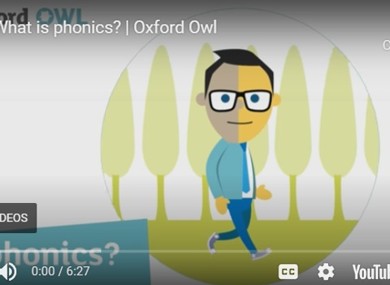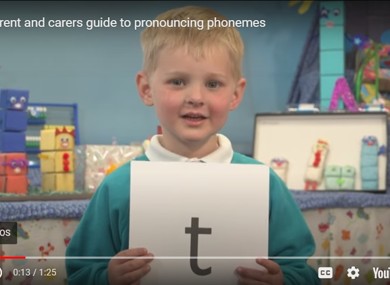- Home
- Parents
- Curriculum Information
- Phonics
Phonics
At St Martin’s Garden Primary school, the approach to teaching phonics is to systematically and sequentially teach children to decode words by sounds, rather than recognising whole words.
In Primary School we follow the Little Wandle Phonics Scheme. The programme is split into 6 phases that systematically build on skills and knowledge of previous The emphasis in early years teaching is on synthetic phonics, in which words are broken up into the smallest units of sound (phonemes). Children are taught the letters (graphemes) that represent these phonemes and also learn to blend them into words. So, at its most basic, children are taught to read the letters in a word like c-a-t, and then blend them to pronounce the word cat. Phonics should be set within a broad and rich language curriculum that takes full account of developing the four interdependent strands of language. Phonics is taught once daily for 25mins, using the review, teach, practice, apply approach. Phonics teaching is multi-sensory, enjoyable and we use resources to engage and support our children in knowing more and remembering more.
What is phonics?
Phonics is a way of teaching children to read quickly and skilfully. They are taught how to:
* Recognise the sounds that individual letters make
* Identify the sounds that different combinations of letters make-such as 'sh' or 'oo'
* Blend these sounds together from left to right to make a word
Children can then use this knowledge to 'decode' new words that they hear or see. This is the first important step in learning to read.
The children are taught to read words by blending, which means pushing all the sounds together to make a word. The children are taught to spell words by segmenting, which means sounding out words and writing down the sounds they can hear.
By the end of Reception children are expected to be secure in Phase Three and moving into Phase 4. By the end of Year One children are expected to be secure in Phase Five. When finishing Key Stage One the children should be secure in Phase Six. This phase moves away from learning sounds and focuses on spelling rules and patterns.

Why phonics?
Research shows that when phonics is taught in a structured way-starting with the easiest sounds and progressing to the most complex-it is the most effective way of teaching young children to read. It is particularly helpful for children aged 5 to 7 years old. Almost all children who receive good teaching of phonics will learn the skills that they need to tackle new words. Children can go on to read any kind of text fluently and confidently, and read for enjoyment. (Department for Education)
Here are some links to information and websites that you may find useful to help you support your child in their early reading and writing skills.

They may also tell you about certain terminology we use in lessons
|
Phoneme |
This is a sound. A sound can be made up of one, two or three letters. The English language has 44 different sounds! |
|
Grapheme |
These are the letters and groups of letters that make up a sound. Sometimes one letter will represent a sound, but at other times more than one letter will represent a sound. |
|
Digraph |
A sound that is made up of two letters, e.g. sh. |
|
Trigraph |
A sound that is made up of three letters, e.g. igh. |
|
Decode |
This is working out what a word is, in many ways 'breaking the code'. To do this, children need to use a combination of skills and knowledge. |
|
Blending |
This is the skill of joining sounds together to read words. Children are taught to say the separate sounds in a word and to then blend them together to decode the word. |
|
Split Digraph |
A digraph that is split in two by other letters, e.g. the sound 'a' in take is represented by the split digraph a _ e. |
|
Segmenting |
This is the opposite of blending. You take a whole word and separate it into it's individual sounds, e.g. cat: c - a - t. |
Assessment
As a school we use Phonics Tracker to assess your child’s phonics knowledge and understanding alongside daily assessment for learning by your child’s teacher. These assessment provides information about which phonics sounds your child can pronounce and also their ability to read high frequency words. As a school we will then use this to support them during 1:1 reading and phonics sessions to ensure they know all the sounds they need at each stage.
At the end of Year One all the children in the country take a test called a Phonics Screening. They have to read 40 real and nonsense words. We call the nonsense words ‘Alien words’ and the children practice reading them alongside real words.
If you want to see an example of a test please click here.




